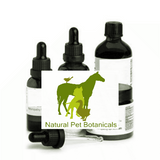Can't recommend this product highly enough
I've been using this product about 10yrs to clear mastitis in my nursing bitches. Where no antibiotics from my vets would make any difference to the affected teats. I just does as per instructions in 6 hrs there is a noticeable improvement.
Can't recommend this product highly enough in conjunction with the Mastitis drops.











